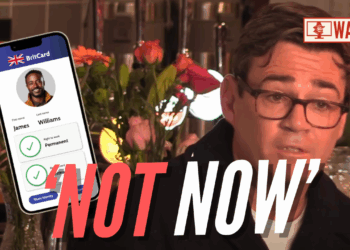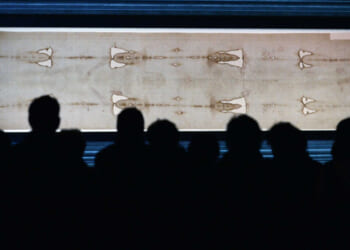The controversy surrounding Maine Democratic Senate candidate Graham Platner’s tattoo is still making the rounds among the chattering classes. In 2007, while off duty as a Marine in Croatia, Platner reportedly got drunk and woke up with a Nazi SS symbol etched into his chest. Nazis are evil; everyone knows that. But this fussy mess isn’t really about moral outrage or bad judgment. It’s about what tattoos have become.
Once upon a time, tattoos marked danger, defiance, and badassery. They were attached to men who’d been around the block — sailors, soldiers, bikers, and outlaws. When I was a kid and came across a guy all tatted up, I took a pause and then a step back. Nowadays, you step toward them and pick your venti caramel crunch frappuccino with soy milk and extra caramel drizzle.
He looks like a tame, domesticated puppy with a plastic spiked collar, though his campaign managers would have you believe he’s a dyed-in-the-wool Maine oysterman.
Platner’s tattoo fits perfectly into this posh milieu. He looks like a tame, domesticated puppy with a plastic spiked collar, though his campaign managers would have you believe he’s a dyed-in-the-wool Maine oysterman. In truth, he’s a well-heeled rich kid walking the blue-collar tightrope with a massive safety net. He attended The Hotchkiss School — tuition north of $75,000 a year — and his grandfather was the celebrated modernist architect Warren Platner. His politics are straight outta the Swarthmore faculty lounge; boutique limousine liberal to the max. His tattoo, stupid as it is, is less a symbol of evil (which it is, to be sure) and more of the manufactured hipster-poser class he seems to represent. (RELATED: Meet Graham Platner: The Latest Democratic Dud for Senate)
For centuries, tattoos recounted tales of grit, danger, and belonging. For Māori in New Zealand, tā moko was a rite of passage, a sacred record of a warrior’s lineage and roots. For sailors and bikers, ink chronicled voyages, crimes, and survival. Tattoos were masculine, exclusionary, and dangerous — markers of a hard life and a way to communicate with your tribe and distance yourself from the squares. (RELATED: The Rise of the Male Bimbo)
Now everyone seems to have one. Kindergarten teachers, accountants, and dentists all sport ink. Getting tattooed today is about as rebellious as sending back a pumpkin spice latte because they used oat milk instead of soy. And these folks aren’t getting their art at the end of seedy wharves in Zanzibar, Macau, or Port Said. The Care Bear crowd gets inked in sterile, well-lit suburban studios wedged between a Saladworks and a Bed Bath & Beyond. Afterward, they grab some fro-yo, pick up their kids from field hockey practice, and upload the photos to Facebook.
And their permanent adornments seem just as hollow: tired tribal bands, dopey dreamcatchers, Roman numerals of the death date of “Iko,” their golden doodle. Gone are the renderings of sailors clinging to masts as the Andaman boiled around them, or markings of a biker’s mad run to the border after a late-night shanking of a few Mongols in Montebello.
My father had a tattoo — and hated it. He served in the 101st Airborne during the Korean War and must’ve gotten it on a long, strange night somewhere on the outskirts of Fort Bragg. The next morning, there it was: the iconic Screaming Eagle on his shoulder. As a kid, I thought it was the coolest thing ever. But for my father, it was a shameful reminder — not for his service or his beloved unit, but for his deep immaturity.
That sense of regret is gone now. The new tattoo class seems to treat every blotchy mark on their skin as a sacred covenant with “their truth.” For this crowd, there appears to be little self-awareness or humility. Unlike the sailors and bikers, their tattoos are chips in a big phony game, not a signifier that they don’t want any part of it. They are, like so much in our society, all about aesthetics and appearance — completely detached from substance or reality. Tattoos once marked that you’d been through something tough; now they just mark that you bought something cheap. Platner might have gotten a good deal on his ink that tipsy night in Croatia — too bad his branding and marketing people weren’t there to talk him out of it. They would have explained to him that Nazis quite repel most focus groups.
READ MORE from Pete Connolly:
Shohei Ohtani Plays Baseball Differently
The New York Times Op-Ed on HBO’s Task Highlights Our Two Americas.

![Scott Bessent Explains The Big Picture Everyone is Missing During the Shutdown [WATCH]](https://www.right2024.com/wp-content/uploads/2025/11/Scott-Bessent-Explains-The-Big-Picture-Everyone-is-Missing-During-350x250.jpg)













